Kinds of White Fish
Everything you need to know about different kinds of white fish, including which are best for which recipes, and what can be substituted for what.
Let’s face it. Fish can be confusing. There are a lot of different kinds and sometimes recipes will specify which to use, but often they won’t. So what does it mean if a recipe calls for “white fish”? Let’s take a dive —pun intended!— into this large, and delicious, category of fish.
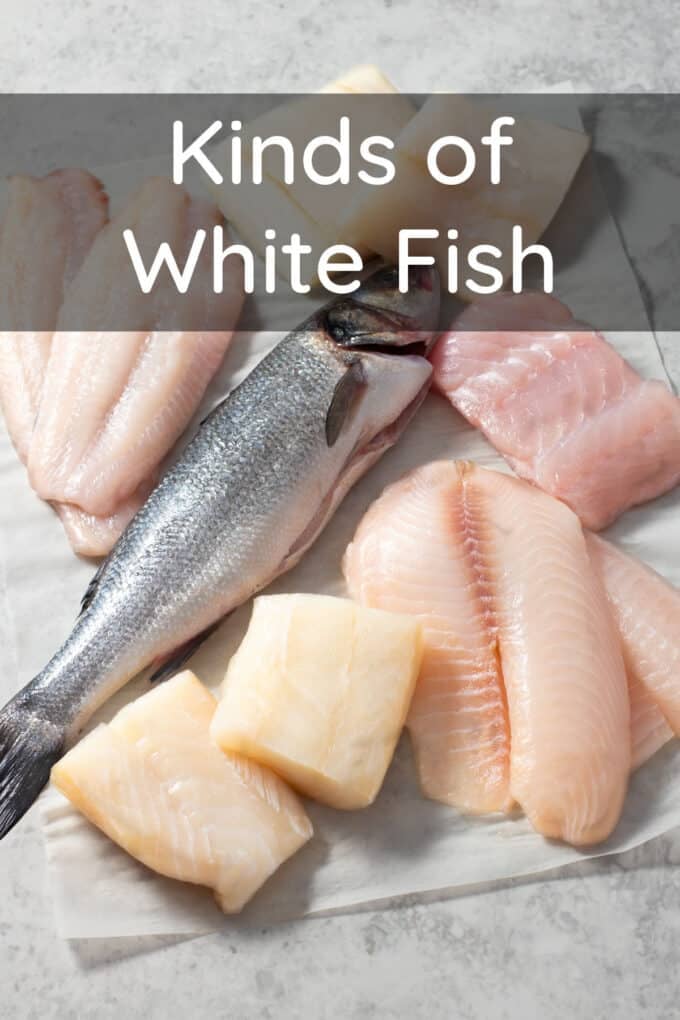
White Fish Basics
First off, I should mention that there is a type of fish called whitefish – but that’s not what we’re talking about here. We’re talking about white fish as a group. This includes pretty much any kind of fish that’s not darkly colored like, for example, salmon and some kinds of tuna.
So that means the white fish group includes fish like ones in the photo (starting at the lower right and going counter-clockwise) – cod, tilapia, pollock, halibut, catfish, and (in the center) branzino. It also includes sea bass, flounder, albacore tuna, sablefish, sturgeon, swordfish, grouper, haddock, rockfish, and red snapper. To name just a few.
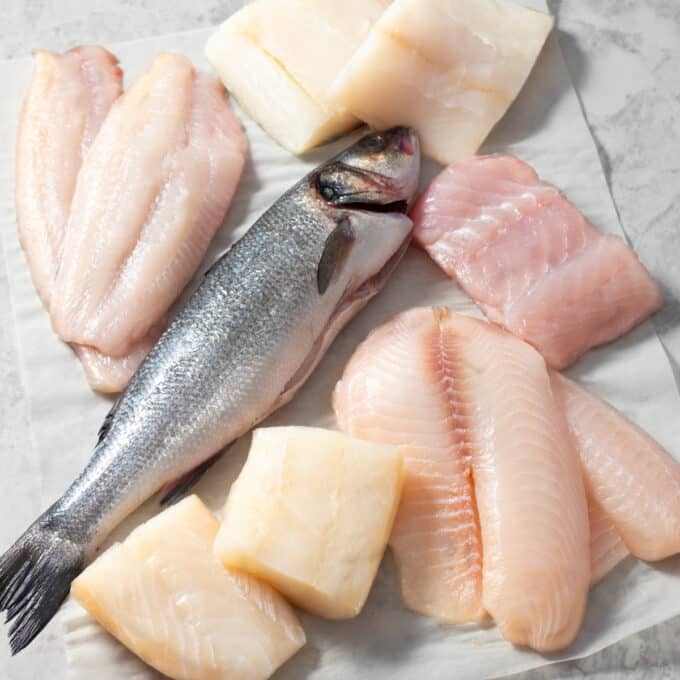
With all those white fishes in the group, there are, of course, variations in how they taste. But their flavors aren’t wildly different. So then, how do you know which to use where?
The answer is it depends on how thick or thin a fish is, how flaky versus meaty it is, and how lean versus fatty it is. My recommendation is to look at white fishes through these lenses. Once you understand how each effects cooking, you’ll have a good idea of the best uses for, say, a thick, meaty, lean fish like halibut versus a thin, flaky, fatty fish like catfish. As well as what might be good substitutes for them and why.
Thick Versus Thin
Most of the time you’ll see white fish sold as fillets. A fillet is a lengthwise half of the whole fish, cleaned, boned, and then sometimes broken down into smaller pieces. With the exception of the whole branzino, all the fish in the photo are fillets.
The fillet of a smaller fish is usually the lengthwise half of the whole fish. In other words, it’s not further broken down into smaller pieces. A smaller fish yields a thinner fillet, typically 1/2 to 3/4 inch. The catfish and tilapia in the lower left and upper right, respectively, are examples.
With larger fish, the lengthwise half of the fish is broken down into smaller pieces, but each piece is thicker, typically 3/4 inch to 1 inch or more. The halibut and cod, in the upper left and lower right respectively, are examples.
There’s another common way you might see fish at the fish counter besides whole or fillet. For very large fish, tuna, or swordfish for example, you’ll also see steaks. That means that the lengthwise half of the whole fish is so large that it can be cut at, say, 1-inch intervals and still yield pieces that are big enough for one or more servings. Steaks are typically 1 to 1 and 1/2 inches thick.
It’s worth mentioning that the larger and longer living the fish, the higher up the food chain it is. Which means the more concentrated any pollutants in its meat are, like mercury. So for health reasons, some say to avoid these kinds of fish, while others say it’s okay for most of us to eat them occasionally. You’ll have to decide what works for you.
What does thick- or thinness mean in the kitchen?
Obviously, the thicker the fish, the longer it’ll take to cook. Flakiness and fattiness can play a part in cooking time, but for the most part, you can substitute any white fish for any other as long as they’re close in thickness.
So, for example, you could make my Fried Catfish recipe with flounder and thinner fillets of tilapia, pollock, and haddock. But you wouldn’t want to use halibut or cod because they’re thicker. At least not without adjusting the cooking time and/or temperature.
Flaky Versus Meaty
Fish is flaky because of the way its muscles are arranged and the fact that there’s very little connective tissue between them, plus that tissue dissolves at a relatively low temperature. So what you’re seeing as flakes are individual muscles with the connective tissue between them dissolved.
Some fishes have big, thick flakes, like cod, while others have smaller ones, like catfish. And then regardless of the size of the flakes, some fishes flake more easily, again like cod, while others are so firm and meaty, you almost need a knife to cut them, like swordfish. But while you can see lines in a piece of fish that indicate the size of the flakes, you can’t necessarily see how firm those flakes will be.
So how do you know if a fish is flaky or meaty? You ask your fishmonger (see this post for more about buying and choosing fish).
What does flakiness or meatiness mean in the kitchen?
While flakiness can affect cooking time, paired with thickness, it mostly effects how delicate a piece of fish will be. The thinner and flakier, the more likely it will break apart during cooking. The thicker and meatier it is, the less likely it will break apart.
That’s why I used thicker, meatier halibut for my Cioppino and Seafood Pasta. Chunks of it can get stirred around in a pot without falling apart. Sturgeon, swordfish, and other meaty white fishes would work well for those recipes too.
It’s also why I like flakier fishes like pollock, haddock, or cod for Air Fryer Fish or Fish Cakes. They’ll break into delicate flakes as you’re eating.
Lean Versus Fatty
While fish is already lean compared to other meats, within the fish category some are leaner or fattier than others. Fattiness, of course, effects flavor. Leaner fish like cod or halibut will seem milder compared to fattier ones like catfish and sturgeon. Fattiness also effects cooking time, but not hugely.
But leanness or fattiness does effect cooking in two important ways. One is that it’s easier to for lean fishes to become dry than fattier ones. That’s because fat buys you a little wiggle room between when the fish is perfectly cooked and overcooked. The other difference when cooking lean versus fatty fishes is that, perhaps not surprisingly, fatty ones will be less likely to stick to your cooking surface, whether that’s a skillet, a baking sheet, or a grill.
What does lean- or fattiness mean in the kitchen?
To avoid both dryness and sticking, leaner fishes are best cooked with moist heat methods, like poaching and steaming. Fattier fishes can be used for those methods as well as for dry heat cooking like sautéing, roasting, and grilling.
So, for example, thicker and fattier sablefish, sturgeon, and Chilean sea bass are great for my Grilled Fish with Tomato Salsa. And leaner tilapia works for Baked Tilapia, as would flounder, pollock, haddock, and thinner fillets of cod and halibut. (The recipe uses a dry cooking method, but the fish is cooked in a rich sauce that helps prevent dryness and sticking).
What About Whole Fish?
In terms of cooking a whole fish, pretty much any whole fish, white or otherwise, can be swapped for another as long as the size of the fish is similar to what the recipe calls for.
Why? Because the size of the fish determines the thickness of the fillets – or in the case of a whole fish, the meat on either side of the body cavity – and that determines cooking time.
Besides thin or thick, the other two characteristics we talked about above—flaky versus meaty and lean versus fatty—don’t really apply. That’s because flakiness, which effects whether a fish falls apart or holds together, is moot. The skin and bones will hold a whole fish together.
And for the same reason, how lean or fatty a whole fish is isn’t much of a factor. The skin around the fish adds moisture and protects the meat from direct heat. This helps even a lean fish stay moist.
So make Roasted Branzino with branzino or any similarly sized whole fish—like larger trout, and smaller snapper and striped bass.
Putting It All Together
There’s a lot of information here, but you don’t need to memorize it. All you need to understand is that thickness, flakiness versus meatiness, and fattiness effect which white fishes are best for which kinds of recipes. A fish can have any combination of those characteristics, so know what you’re looking for. But also know that, no matter what specific fish a recipe calls for, another fish with similar characteristics will likely work just as well.
And perhaps most importantly, if you have questions, ask your fishmonger.
Podcast Episode About Types Of White Fish
Listen to our editor, Christine Pittman, explain briefly about how to make this recipe, with some great tips along the way, by clicking the play button below:
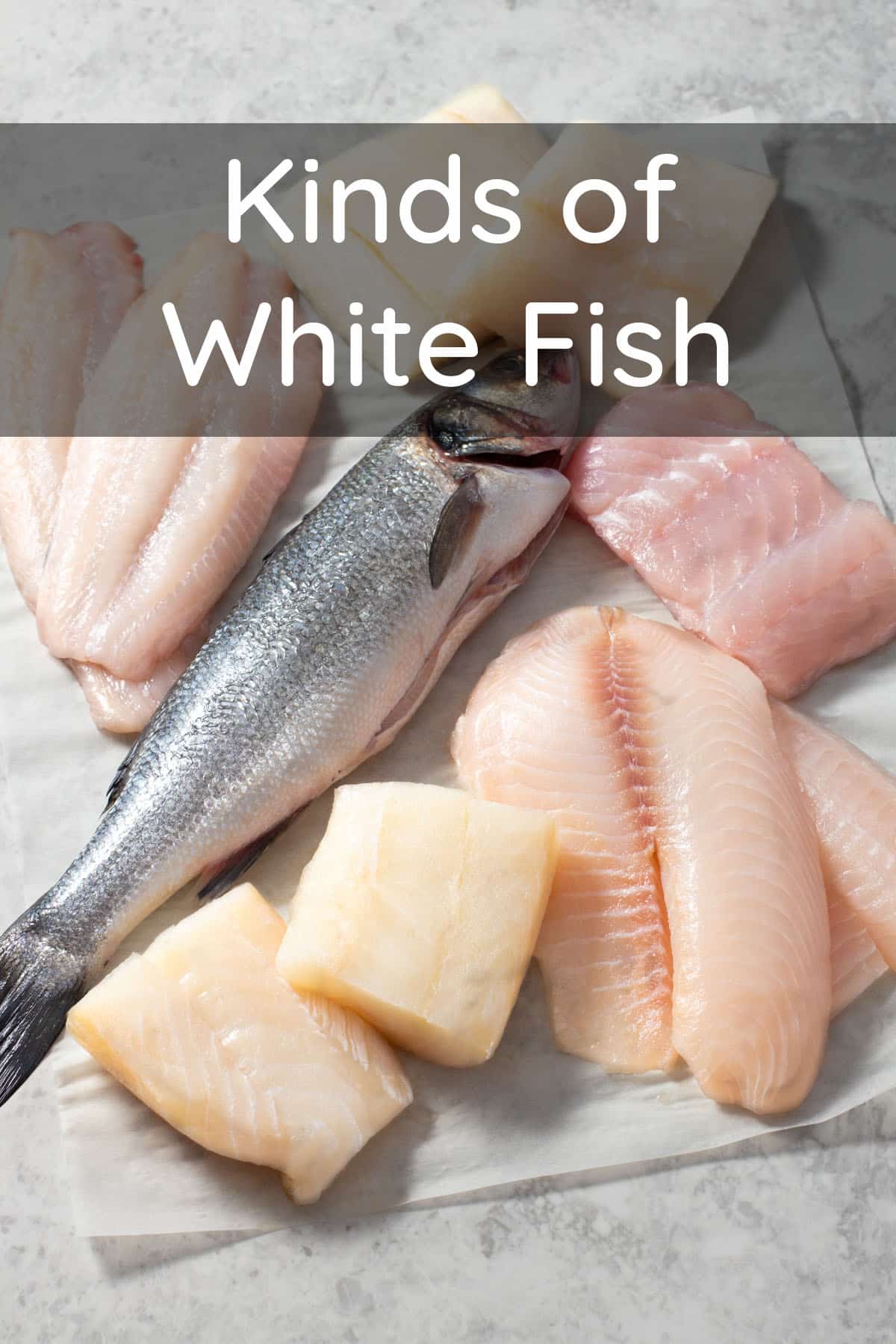
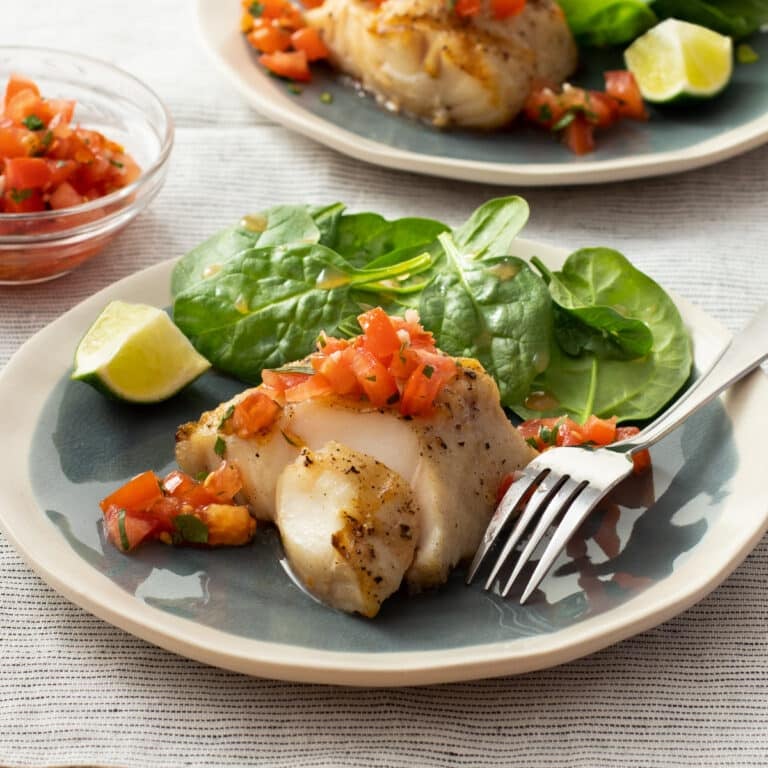
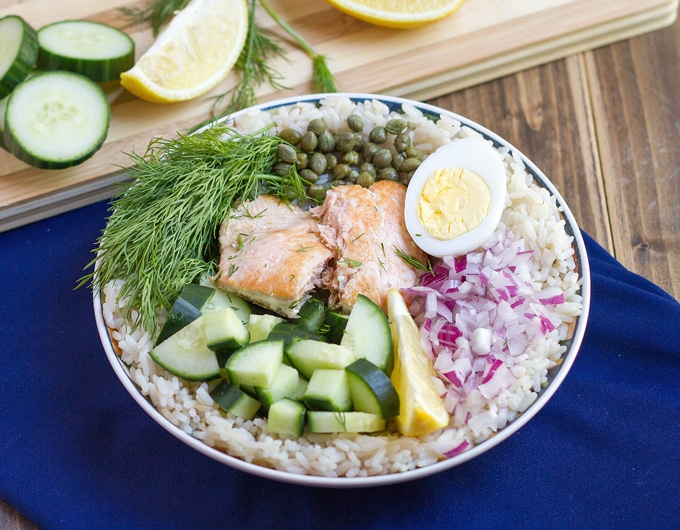
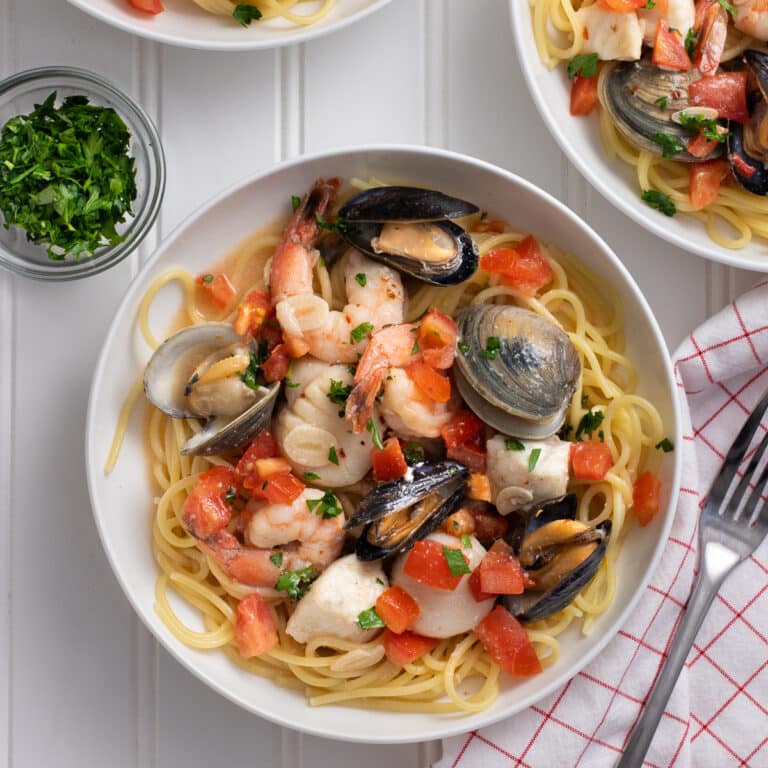
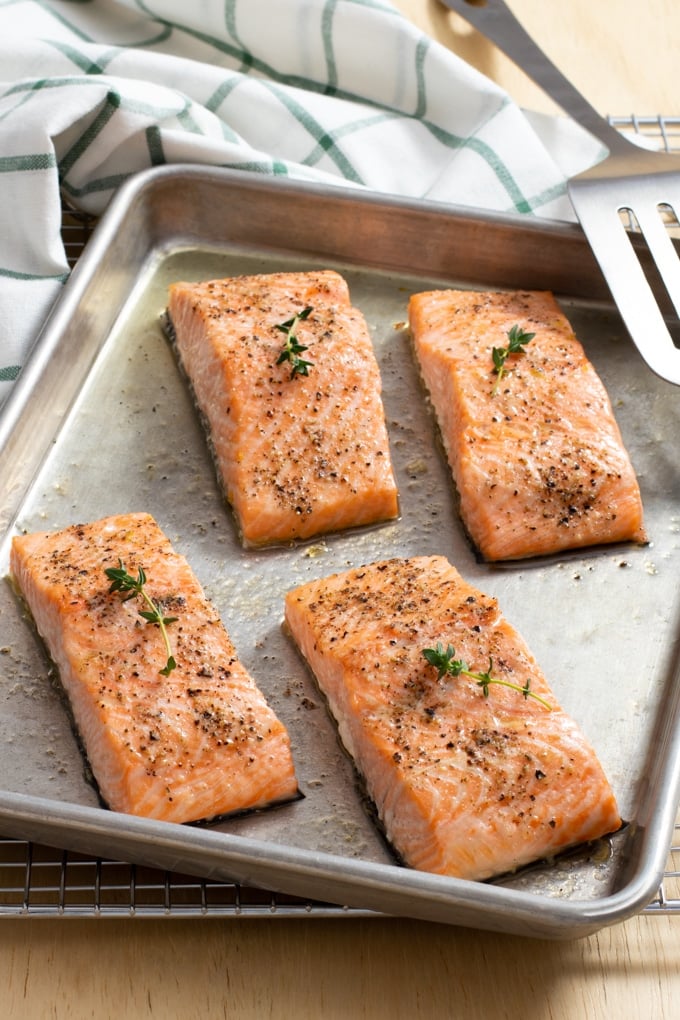
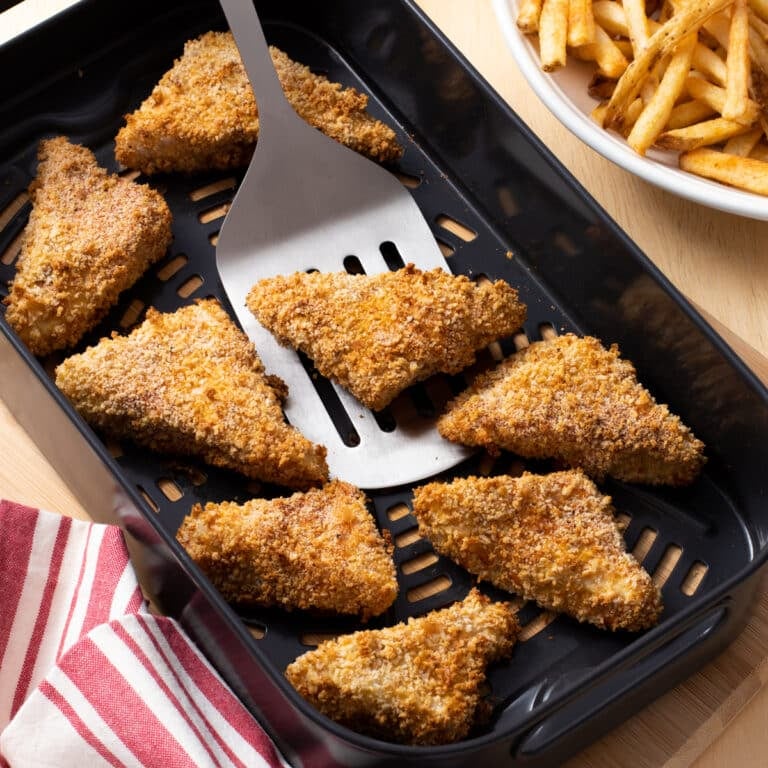
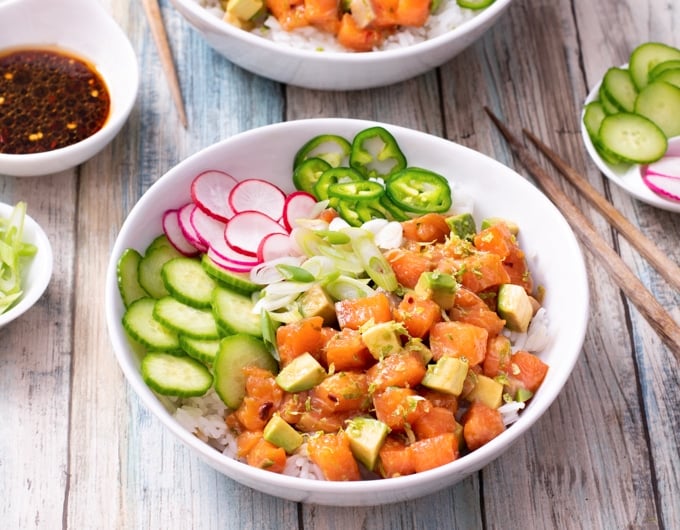

















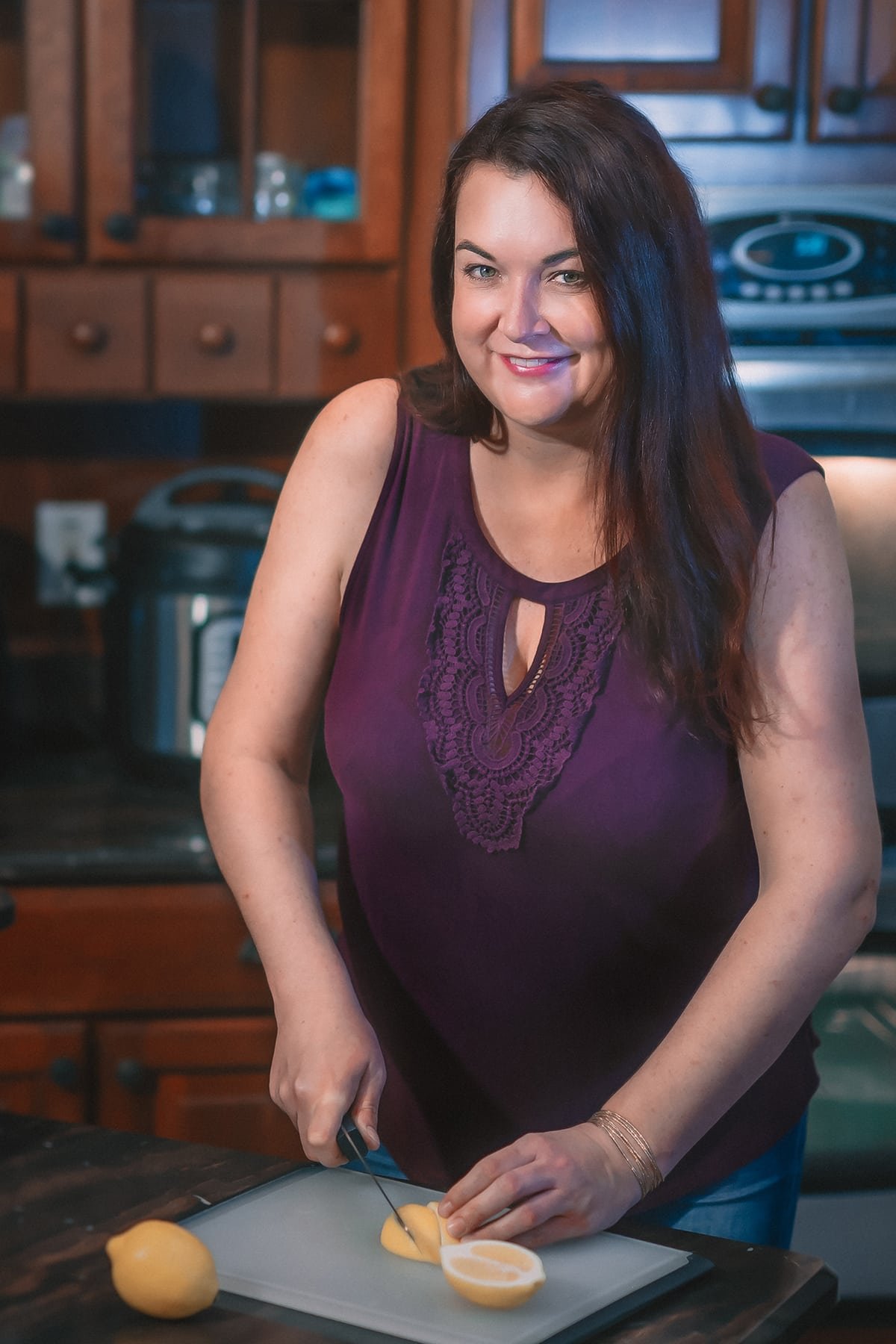
very informative!!! NOW i understand why i always thought halibut tasted like cardboard. overcooking……hmmm, who knew?!?!?!
you broke it down and made it make sense!!!
and this is an FYI that i learned;
years ago, i had bought a wonderful raspberry vinegar at a local renaissance fair, and thought tit would taste wonderful with fish!!!!! so i took my fish and veggies (love squash) and the lovely raspberry vinegar, and i baked it. i ended up with raspberry/fish flavored broth with veggies (said squash)!!! the vinegar dissolved my fish.
hahahahaha….it was still yummy!!!!
I’m so happy you find all the information helpful, Linda. And thank you for sharing your experience!
hello, i requested a list of non-white fish
i am still sorting through your informative post
my dog is allergic to white fish
if you have a list, i would be grateful, if not, i appreciate the information you have provided…thank you
I’m sorry, Johanna, I don’t have a list for that, nor do I know which fish are safe for dogs to eat. We do have Poached Salmon if that is helpful.
Hello! Mind you I’m not well versed in “whitefish”. I had a broiled whitefish filet in Florida that was fabulous. It was flaky and perfectly cooked. Are you able to determine the type of fish and how I could broil, the same? Sorry if it’s a silly question but I would like to try duplicating something similar. Thank you for your helpful post.
Unfortunately, I can’t tell what kind of white fish it would have been just from that information, Jen. I can tell you that pollock, haddock, and cod tend to be the flakier varieties of white fish so I would start there! I don’t have a broiled recipe, but you could try this Easy Baked Haddock recipe.